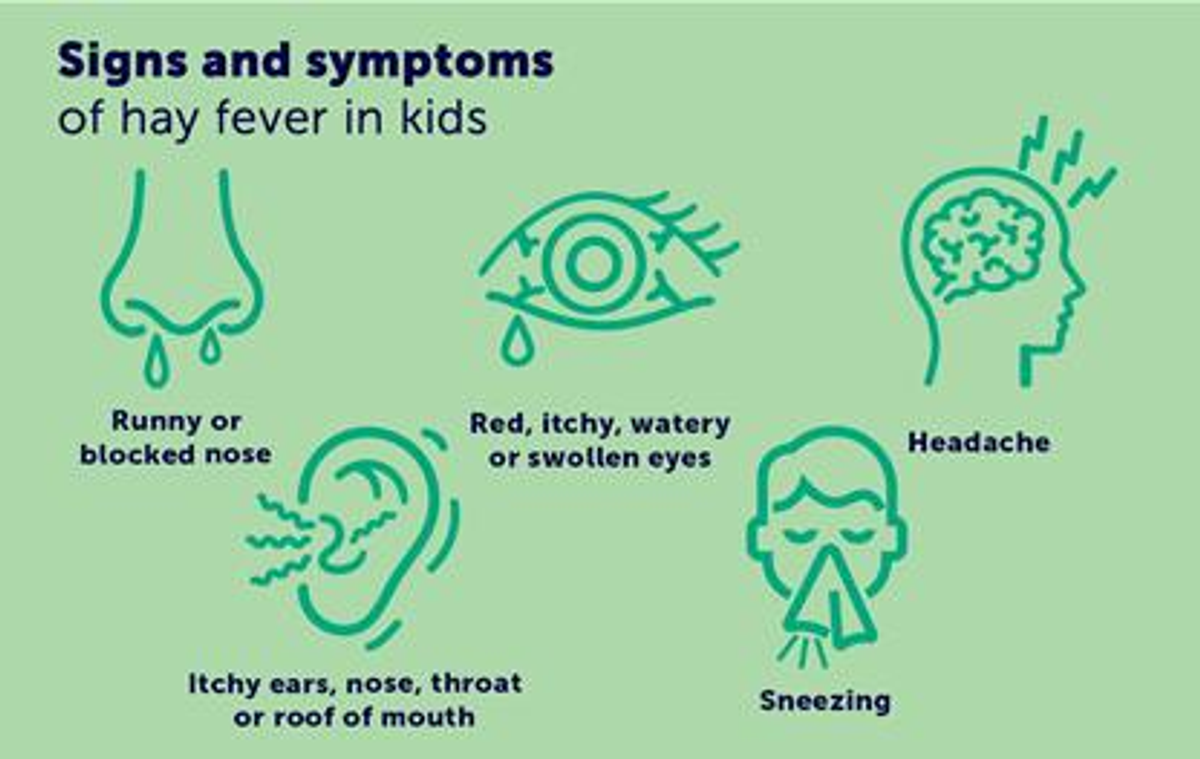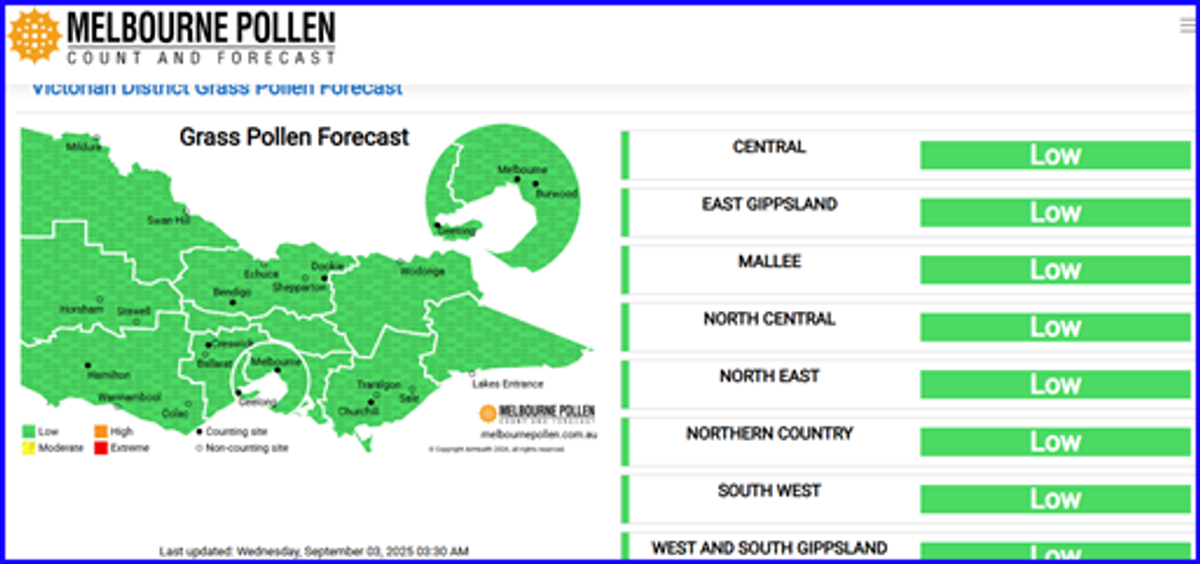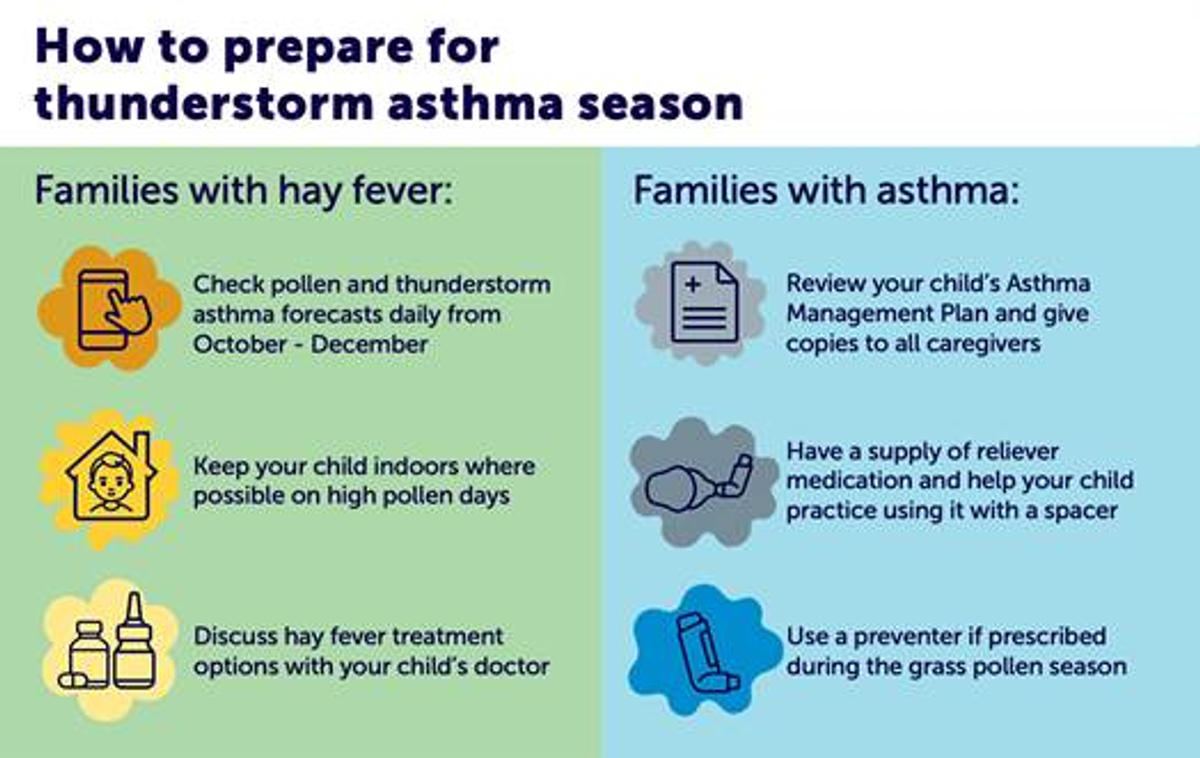Health Centre

For students & families dealing with seasonal Hay fever (Allergic rhinitis), the peak bodies in Australia for best practice advice and current information are:
- Healthdirect https://www.healthdirect.gov.au/ & the Royal Children’s Hospital https://www.rch.org.au/kidsinfo/fact_sheets/Hay_fever/ also provide reliable information on Hay fever management and treatments for families.
- Visit the ASCIA website for detailed information, including the ASCIA Allergic Rhinitis Treatment Plan and other patient resources.
Seasonal Hay fever is a common allergic reaction, commonly occurring in spring and summer, to pollens from trees, plants, flowers, weeds, and grasses. Allergens like dust mites, mould spores, animal fur or dander can trigger perennial Hay fever any time of year.
Untreated Hay fever can lead to other issues like Asthma, Sinusitis or Middle-ear infections.
In Victoria, the grass pollen hay fever season primarily runs from August to February, with peak pollen counts and symptoms often occurring in October and November.
Introduced perennial ryegrass is a significant allergen, especially in agricultural and rural areas of Victoria and other pollen from introduced trees in late winter/spring can also trigger symptoms. Unseasonably warm springs and dry summers can lead to more vigorous plant growth and longer, stronger hay fever seasons.
The best medicine is to avoid triggers and prevent or reduce symptoms.
Check daily pollen counts at Pollen Forecast Australia on https://www.pollenforecast.com.au/ for real-time updates and take precautions on high pollen days.
- Stay indoors during high pollen counts, especially on windy days or during and after thunderstorms.
- Keep windows closed at home and in the car to prevent pollen from entering. Use recirculating air conditioning when possible.
- After being outside, shower and rinse your eyes with water to remove pollen.
- Avoid mowing the lawn if possible or wear a mask. Remove plants that are known to trigger your Hay fever symptoms.
- Avoid hanging clothes and bed linen outside to dry.
Medication Treatments
Available options include non-drowsy Antihistamines for itching and sneezing, and Steroid nasal sprays to reduce swelling. Combined Antihistamine and Steroid nasal sprays are also an option.
These options need to be continued throughout the season.
Antihistamines
Start early:
To be most effective, start taking antihistamines 2-4 weeks before your pollen season begins.
Take them daily:
Continue taking them every day throughout the season, even if you feel fine, as they work best for long-term control.
Long-term use is fine:
There's no evidence that your body gets "used to" modern antihistamines or that their effectiveness decreases with long-term use.
Steroids
Start before pollen season:
Begin using nasal steroid sprays a week or two before your symptoms are expected to start.
Use them daily:
You need to use them daily for the best and sustained relief, and they can take up to two weeks to become fully effective.
NB: Oral steroids are for short-term use only:
Steroid pills, such as prednisone, are rarely used for nasal allergies and are only prescribed for short periods to manage severe symptoms, as long-term use can lead to serious side effects.
Immunotherapy:
For severe or poorly controlled Hay fever, a doctor may recommend allergen immunotherapy (desensitisation) after confirming the trigger through allergy tests.
If Hay fever causes Asthma symptoms, it's crucial to keep your asthma well-controlled, potentially with a daily preventative asthma medicine, especially during pollen season
Thunderstorm Asthma
Thunderstorm Asthma is a serious condition linked to Hay fever. It is caused by high pollen levels and stormy weather. Pollens are split into smaller particles and therefore breathed more deeply into the lungs. The storm also spreads the pollens over a larger area. The condition is rare but can be sudden, serious and life-threatening.
If your child has asthma, hay fever or a family history of asthma, their risk is higher. However, thunderstorm asthma can affect any child.
If your child has hay fever, it is important to prepare for thunderstorm asthma season.
In Victoria, the most common times of year for thunderstorm asthma are spring and summer, between October and December.
Not all thunderstorms on high-pollen days will trigger thunderstorm asthma; be ready but not alarmed.
The VicEmergency website shares a thunderstorm asthma forecast during these months, with warnings for each region of Victoria.
Call an ambulance (000) immediately if your child struggles to breathe or talk.
For further information:
https://asthma.org.au/triggers/thunderstorm-asthma/
Please be in touch if you have any questions.
Lisa Glover / Kath Treble






